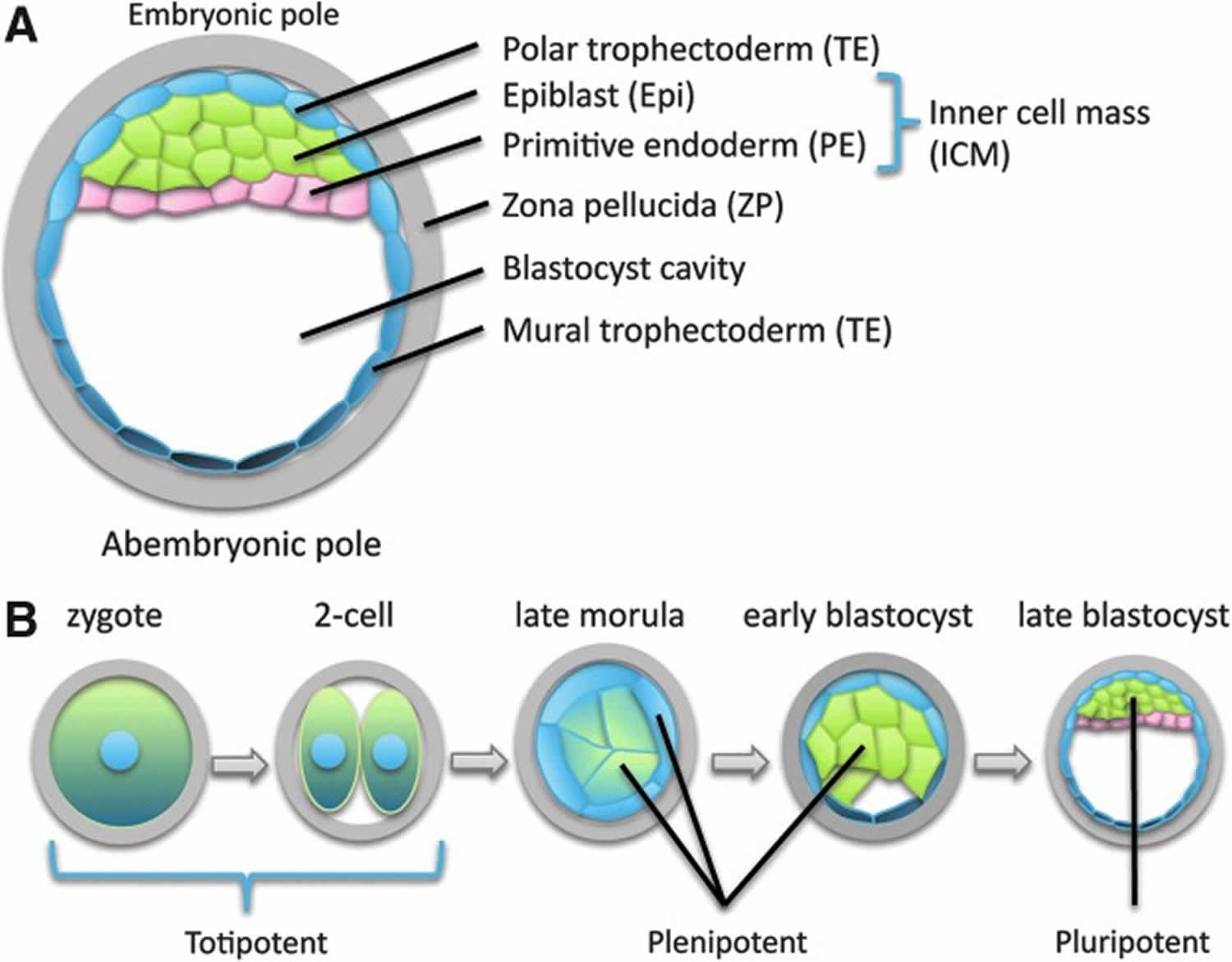

Each twin in that case can also develop their own umbilical cord and placenta too, although they sometimes share. What this means is that if, for example, an 8-cell human embryo for whatever reason breaks into 2 pieces of 3 and 5 cells or 1 and 7 cells, in many cases those separate totipotent cells will go on to make 2 separate embryos and ultimately babies. Interestingly, as normal early embryo development proceeds and the fertilized egg/zygote goes from just being that one cell to divide to make 2 cells and 4 cells and then 8 cells, it is thought that all of the cells are still totipotent. This material is excerpted from my book on stem cells, Stem Cells: An Insider’s Guide. You can see examples of real human totipotent stem cells in the image above of early human embryos at the 2- and 4-cell stages at the top of the figure. Also the zygote of a dog, cat, and so on. The same goes for a totipotent human zygote.

That bear’s zygote can make the actual new eventual baby bear including all of the several hundred kinds of bear cells and also the placenta and umbilical cord that the fetal bear will need in utero. In the animal world, a newly pregnant bear has a zygote that will develop in its uterus that is totipotent. Those latter structures include placenta and umbilical cord.įor example, the classic kind of totipotent cell is the fertilized egg, also called a zygote.

What that means is that these cells can make any other cells in the developing body in utero as well as the special cells and tissues needed during development. For example, recently a student asked me, “Professor Knoepfler, are there any types of cells that totipotent stem cells cannot make?”Īs their name implies, totipotent stem cells are entirely potent or all-powerful from a cellular perspective. Their interest probably is piqued because these are the most powerful cells. Some students seem especially fascinated by totipotent stem cells. What are totipotent stem cells?Įvery year I give a lecture here at UC Davis School of Medicine for my medical students about stem cells. Image and caption from Stem Cells: An Insider’s Guide by Paul Knoepfler. An arrow in the inset higher magnification view of the hatched blastocyst (breaking out of the zona pellucida) indicates the inner cell mass (ICM) that can produce embryonic stem cells when cultured.

Photomicrograph of early human embryo development. Today’s post focuses on the question of what totipotent cells are all about and addresses more specific questions about them, including why so far there seem to be fewer clinical applications for them as compared to most other stem cell types. I’m a long-time stem cell biologist so I can give them that perspective, but this should be something they discuss primarily with their physician The answer to that is, of course, going to depend on many factors. Other times it seems what patients specifically want to know is what might be the best stem cells for their particular condition. I think they often are looking for the most powerful stem cells so perhaps they should be asking, “What are totipotent stem cells?” The totipotent cells can make themselves into different cells in a human body, which is known as the Pluripotent cells.Sometimes patients or my students ask me, “What are the best stem cells?” what information are they looking for? These cells have got the name totipotent because the word totipotent means whole, which means it can create a new individual. Totipotent cells fall under the category of embryonic cells. Those stem cells that have the capability of growing themselves into a new organism are known as Totipotent. Research Totipotent cells are least used for research work Pluripotent cells are often or mostly used for research work Function It can be differentiated into all cells It can be differentiated into three germ layers Example Zygote Blood cells, Cardiac muscles, Neural cells, etc. Pluripotent cells are the next stage of totipotent cells. Formation Totipotent cells are formed by the process of diffusion of Sperm cells and Fertilized egg cells. The stem cells that can develop themselves into more different types of two hundred cells are known as pluripotent. Comparison Table Parameters of Comparison Totipotent Pluripotent Definition The stem cells that have the capability of growing themselves into a new individual organism are known as totipotent.


 0 kommentar(er)
0 kommentar(er)
